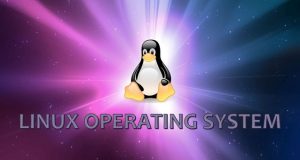Various Issue #47, March 1998 Our experts answer your technical questions. Implementing Ballistic Mouse Control I’ve been spoiled by operating systems that use “ballistic mouse” control (a fast motion of the mouse moves the mouse a lot while a slow motion moves the mouse very little). I’m using Metro-X but seem to recall the same limitation with XFree. Is there ...
Read More »Monthly Archives: June 2021
qvplay and the Casio QV-10 Camera
Bob Hepple Issue #47, March 1998 Linux software to control the Casio QV-10 camera is now available. Mr. Hepple tells us how to use qvplay. In the continuing battle with the Evil Empire, I have recently reduced my dependence on “Them” by one program—I discovered a way to use my Casio QV-10 digital camera with Linux. This article is a ...
Read More »Getting Rid of Spam
Brandon M. Browning Issue #47, March 1998 Here’s a way to filter unwanted mail using procmail. If you regularly receive a high volume of mail (e.g., you subscribe to several mailing lists) or are the target of unsolicited bulk e-mail (UBE), mail filtering may have crossed your mind. procmail is a flexible tool that allows you to process incoming e-mail ...
Read More »GPIB: Cool, It Works with Linux!
Timotej Ecimovic Issue #47, March 1998 GPIB is a standard bus used in laboratory and industry data acquisition and experimental control that is now available for Linux. Gambling is a way of life with computers. The technology is changing daily, and anyone involved with system administration should try to keep up with it at any cost. Sometimes it’s all too ...
Read More »The SANE Scanner Interface
David Mosberger Issue #47, March 1998 SANE makes it easy to support a wide variety of devices and of applications with a minimum amount of programming effort. SANE stands for “Scanner Access Now Easy”. It is a universal interface that enables you to acquire images from any device that produces raster images, including flatbed scanners, video and still cameras and ...
Read More »Linux Network Programming, Part 2
Ivan Griffin John Nelson Issue #47, March 1998 In part 2 of our series we learn how to design and code network daemons to serve our clients well. Daemon processes are servers which run in the background servicing various clients. You should be aware of the following few issues when creating daemon processes. During development, it is always advisable to ...
Read More »Linux Support – Clustering Linux Servers
Various Issue #46, February 1998 Our experts answer your technical questions. Using Two Monitors in Linux Is it possible to set up Linux to use two monitors? If so, where can I find out about it? —Greg Bell It is possible to use multiple monitors but to do so you will need an X Server that supports it. Accelerated X ...
Read More »A Partner’s Survival Guide
Telsa Gwynne Issue #46, February 1998 A view of life with a hacker brought to us by a mischievous spouse who should know—Ms. Gwynne is married to Alan Cox. I have just celebrated my fifth wedding anniversary to a hacker. Happily, there aren’t many things I would change. I feel the past five years have given me some experiences that ...
Read More »The Quick Start Guide to the GIMP, Part Four
Michael J. Hammel Issue #46, February 1998 Our series winds up with a detailed description of the toolbox, plug-ins and keyboard acceleration. Last month we talked about the Image Window and Layers, two very important topics when learning about the GIMP. Image Windows are where image processing work is displayed and where you pick the ...
Read More »Linux Helps Bring Titanic to Life
Daryll Strauss Wook Issue #46, February 1998 Digital Domain uses Linux to create high-tech visual effects for the movies. Digital Domain is an advanced full-service production studio located in Venice, California. There, we generate visual effects for feature films and commercials as well as new media applications. Our feature film credits include Interview with the Vampire, True Lies, Apollo 13, ...
Read More » Linux, Linux OS, Free Linux Operating System, Linux India Linux, Linux OS,Free Linux Operating System,Linux India supports Linux users in India, Free Software on Linux OS, Linux India helps to growth Linux OS in India
Linux, Linux OS, Free Linux Operating System, Linux India Linux, Linux OS,Free Linux Operating System,Linux India supports Linux users in India, Free Software on Linux OS, Linux India helps to growth Linux OS in India

